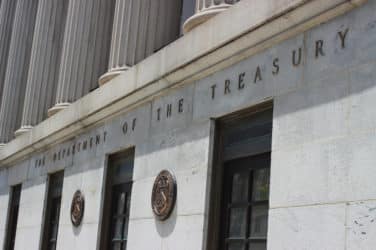
The vast majority of fixed income execution venues offer an all-to-all model and volumes of multilateral trading are expected to continue to increase according to research from consultancy GreySpark Partners.
Willis Bruckermann, consultant, capital markets intelligence at Greyspark Partners, said in a report that all-to-all trading with both sell-side and buy-side liquidity providers within a single venue is the norm in 2019.
“Venues offering only one or the other category of liquidity are no longer adequate to satisfy buy-side trading needs,” he added.
Our Trends in Fixed Income report for 2019 is out! This year we have used over 12,000 data points from 125 trading venues to analyse the continued advancement of all-to-all (A2A) trading at the expense of the historic broker-dealer-centric trading model. https://t.co/ChLeqG0cdV pic.twitter.com/pgnKkJz1EE
— GreySpark Partners (@GreySparkUK) March 27, 2019
The consultancy’s analysis found that more than three quarters of the venues are multilateral where multiple liquidity providers compete for trades, which is unsurprising given fixed income market structure’s secular shift towards all-to-all trading. The importance of the buy side as price-makers varies based on the product mix offered on a given venue.
Bruckermann said: “The share of bond electronic trading venues offering buy-side firms the opportunity to act as price-makers – both across single- and multi-tiered matching methodologies – illustrates that market participants, both on the sell side and the buy side, should no longer wait for change to happen: change has happened, and continues to happen at a rapid pace.”
For example, electronic fixed income trading venue MarketAxess said in its results that Open Trading, its all-to-all trading model, reached record volumes of $376.5bn (€335bn) last year, up 62.6% from 2017.
Rick McVey, chairman and chief executive of MarketAxess, said in a statement: “The fourth quarter was one of our best quarters ever for year over year market share gains, as well as volume growth in Open Trading. The liquidity pool provided by Open Trading was increasingly valuable as credit spreads widened, leading to record estimated transaction cost savings for our clients of $57m for the quarter.”
New venues
GreySpark continued that banks have begun operating multilateral electronic trading venues within the MiFID II framework.
The introduction of the MiFID II regulations in the European Union at the start of 2018 introduced best execution requirements in fixed income and mandated new reporting requirements, which are met more efficiently through electronic trading.
“Most strikingly, banks – long the bastions of bilateral trading – have begun offering explicitly multilateral venues on which the operator itself does not provide liquidity,” said Bruckermann.
The consultancy explained that the emergence of bank-operated multilateral electronic trading venues is the natural conclusion of the evolution of the banks’ business model from principal to agency trading as they were forced to reduce their balance sheets after the financial crisis.
“By running multilateral electronic trading venues, a bank’s agency trading services are made explicit; liquidity crossing services are electronified and exposed to the clients providing liquidity on the platform, which was formerly an internal and – from the client perspective – opaque ECN,” added GreySpark.
In addition new venue operators are entering global fixed income including exchange operators and proprietary trading firms that are expanding from equities and foreign exchange. Bruckermann expects a number of proprietary trading firms to launch multilateral fixed income facilities.
“Exchanges take on a significantly more pronounced role as trading venues for bonds and swaps,” he added. “This growth in market share has come largely at the cost of independent brokerage venue providers.”
Bruckermann continued that despite the increase in all-to-all trading many venue operators continue to conceal buy-side liquidity, most commonly through dark matching.
“GreySpark is particularly interested in this finding as the provision of exclusively dark liquidity functions as a proxy by which venue operators express their view of the future of the market evolution and the end-state structure it will take,” said the report. “This being the case, venue operators send a clear signal regarding the further evolution of the fixed income e-trading market going forward: all-to-all trading will continue to increase in significance, across both single- and multi-tiered markets.”








